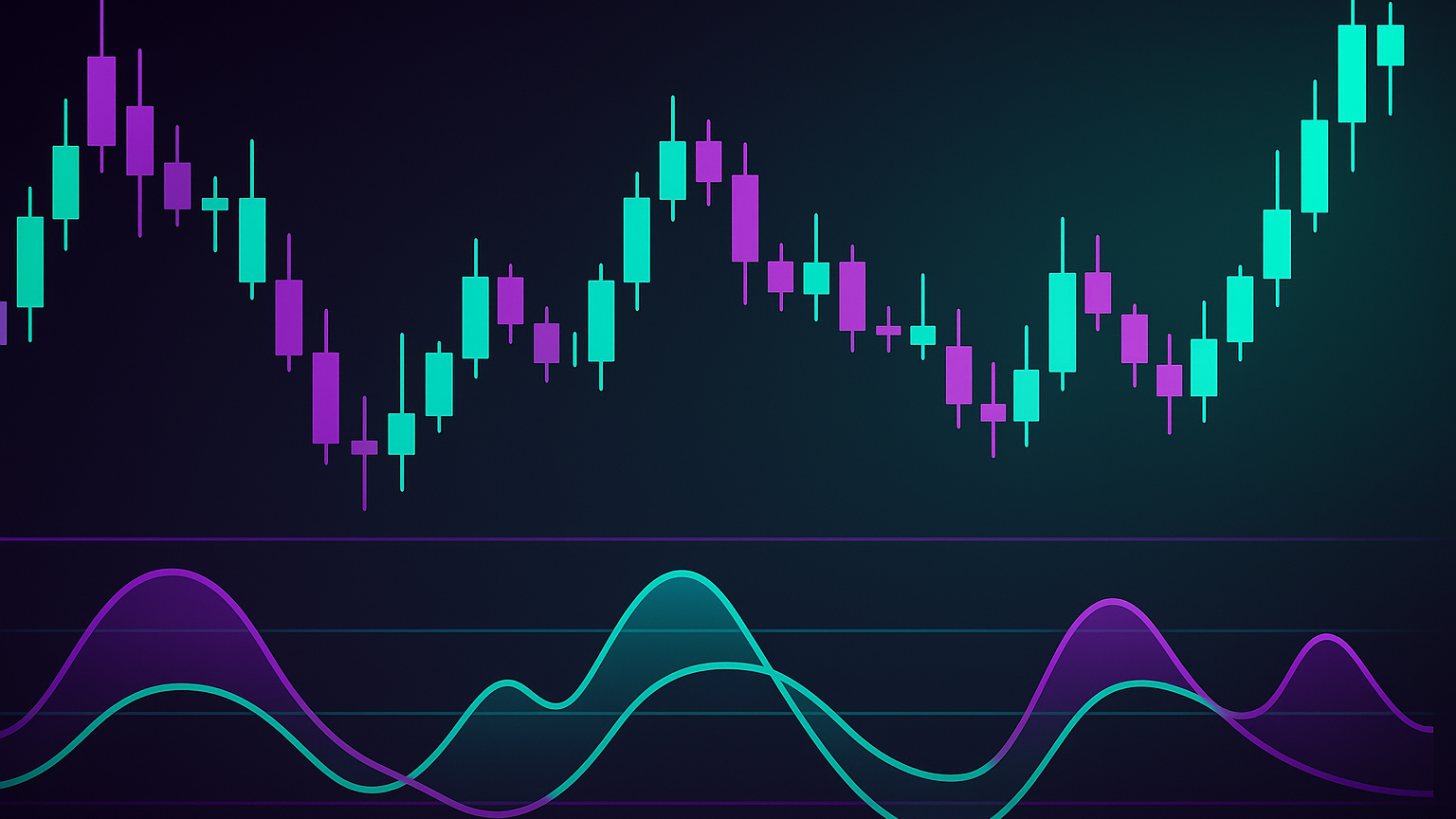Learn how On-Neck and In-Neck candlestick patterns indicate bearish trends, enhancing your trading strategy through key technical signals.
Looking to understand bearish Library’s candlestick indicators in downtrends? On-Neck and In-Neck patterns are two important signals traders use to predict price movements. Here’s what you need to know:
- On-Neck Pattern: A long bearish candle followed by a smaller candle closing at or near the first candle's low. Signals strong bearish continuation.
- In-Neck Pattern: Similar setup, but the second candle closes slightly above the first candle's low. Indicates moderate bearish continuation.
Quick Comparison
| Pattern Type | Second Candle Close | Signal Strength |
|---|---|---|
| On-Neck | At or near the first candle's low | Strong bearish continuation |
| In-Neck | Slightly above the first candle's low | Moderate bearish continuation |
Key Tips:
- These patterns only appear during downtrends.
- Always wait for confirmation (e.g., another bearish candle) before acting.
- Use additional indicators like volume, RSI, or MACD for better accuracy.
These patterns help traders gauge market sentiment and time their trades effectively. Combine them with other resources to refine your strategy.
On-Neck Pattern: How to identify the Neckline Candlestick Pattern
How to Spot These Patterns
Identifying these patterns during a downtrend can reveal important market signals. These formations occur exclusively in downtrends and consist of two-candlestick setups that offer traders specific insights.
Finding On-Neck Patterns
The On-Neck pattern features a long bearish candle followed by a smaller bullish candle. The second candle opens below the first candle's close and finishes at or near its low.

| Pattern Element | Key Characteristics | Required Conditions |
|---|---|---|
| First Candle | Long bearish candle | Shows strong downward momentum |
| Second Candle | Smaller bullish candle | Opens below the first candle's close |
| Closing Position | Closes at or near the first candle's low | Must close at or near the first candle's low |
| Market Context | Forms during a downtrend | Invalid in sideways or ranging markets |
Finding In-Neck Patterns
The In-Neck pattern also starts with a long bearish candle. However, the second candle closes slightly above the first candle's low while staying below its close.
Common Pattern Mistakes
- Misidentification: Traders often confuse In-Neck with the bullish counterattack pattern. The difference is the second candle’s close relative to the first candle’s low.
- Skipping Confirmation: Acting on the pattern without waiting for another bearish candle is a common error.
- Ignoring Context: These patterns must appear in a clear downtrend; they are ineffective in range-bound markets.
To improve accuracy, use these patterns alongside other technical indicators. Confirmation is essential for better trading outcomes.
Reading Pattern Signals
On-Neck Pattern Market Signals
This pattern suggests bearish continuation. A long first candle followed by a near-low close on the second candle shows that sellers remain in control. High volume during formation further strengthens the signal.
In-Neck Pattern Market Signals
This setup provides a weaker bearish signal than On-Neck: the second candle’s close slightly above the prior low hints at a modest buy effort that fails to reverse the downtrend.
Using Other Indicators
- Volume Analysis: High volume increases reliability; declining volume suggests momentum is waning.
- Momentum Indicators: A bearish MACD crossover and RSI below 50 confirm continuation.
- Price Action Context: Check dynamic support/resistance and trend lines for added context.
Trading with These Patterns
When to Enter and Exit Trades
Enter on a bearish confirmation candle after the pattern completes. For On-Neck, wait for a close below the pattern low; for In-Neck, below the second candle.
Managing Trade Risk
- Place your stop-loss just above the pattern’s high (e.g., set at $102.50 on a $100 stock if the pattern high is $102).
- Risk only 1–2% of capital per trade by sizing positions accordingly.
Testing Pattern Performance
Automated backtesting saves time—run thousands of trades in hours—while manual testing offers deeper insight for complex patterns. Track metrics like win rate, profit factor, and drawdown to refine your approach.
Conclusion
Key Takeaways
- On-Neck and In-Neck are key bearish continuation setups in clear downtrends.
- On-Neck often signals stronger bearish momentum; In-Neck requires stricter confirmation.
- Always combine with volume, momentum indicators, and price-action context.
Next Steps
Practice spotting these patterns on historical charts, apply strict risk controls, and blend them with other indicators to sharpen your trading edge.








